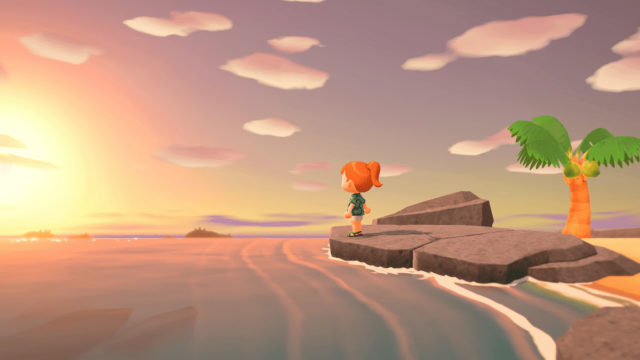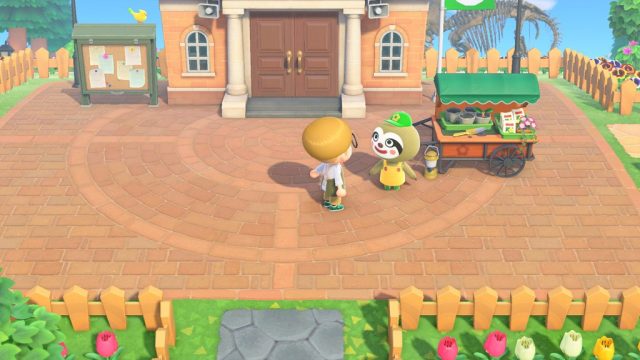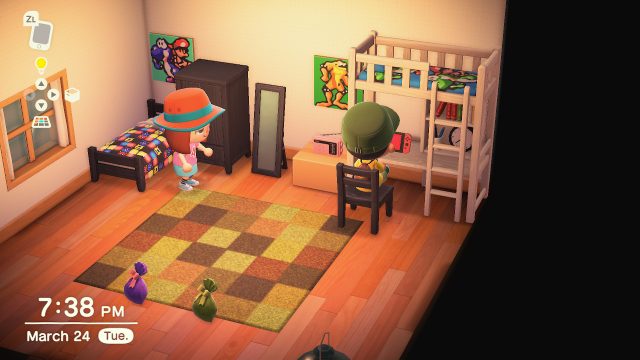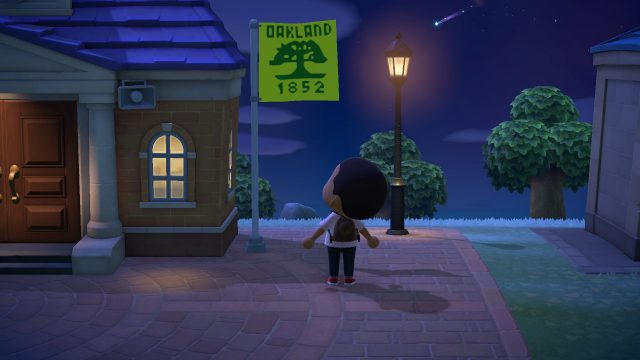Animal Crossing: New Horizons has been a major hit following its launch in March. The game has sold over 13 million copies to date—no small feat for what was once a niche series. Part of that success can be attributed to the COVID-19 pandemic and ensuing quarantine orders, of course, but it would be disingenuous to believe that the quality of New Horizons isn’t a major reason it has resonated with so many people. That said, this particular installment of Animal Crossing isn’t without some issues that have only grown more apparent in the months since its release. After spending a lot of time living the island life, there are a handful of flaws that are commonly agreed upon by fans and pundits alike that Nintendo could theoretically patch out—so let’s help and add our own insights into the debate!
Mixed Messages
Perhaps the most overarching issue that New Horizons has is an inconsistent stance on zen-like patience versus instant gratification. Animal Crossing is, across its history as a series, about the slow burn of building up a community from nothing. Each iteration plays out in real time, with every hour in real life reflected in-game. Time traveling might be something that players do to force things along at their own pace, but the fact remains that it’s not a part of the designers’ vision for Animal Crossing. This is a game taken a day at a time, and the journey is pushed as the reward as much as the end result.
The problem is that New Horizons appears to contradict this mantra on a regular basis. Take the act of crafting, for instance. If a player wants to speed up building or customizing items, they can rapidly tap the “A” button. That’s a nice way of saving time when there’s a lot that the player wants to construct. Indeed, one can further argue that the capability to speed up crafting asserts that the development team was well aware that the action can become tedious. Strangely, while Nintendo opted to let players craft and customize quickly, the process of actually selecting an item to create is far less so, as it requires repeatedly scrolling through the same menus and selecting the same prompts to get anything done. What’s the point of arbitrarily impeding only part of the crafting process?
It’s a question that many people have likely wondered since New Horizons dropped and there is no clear answer. Frankly, there doesn’t seem to be an answer, because the situation doesn’t make sense. In design, particularly as it relates to ease of use with user interfaces, simplicity is king. Utilizing an ATM machine, for example, should be intuitive to the user with next to zero learning curve, and quickly provide its services in a given transaction. If New Horizons was an ATM machine, it would be one that demands its users withdraw dollars a single bill at a time.
Selecting a recipe and crafting the corresponding item is an unreasonably long experience in New Horizons. It’s a situation that’s largely exacerbated by the fact that crafting itself is mindless—it takes no skill from the player to achieve beyond accumulating the resources and making a selection from the menu. Thus, as a player it’s very confusing to think that Nintendo would demand repeatedly sitting through a task that provides no feedback or enjoyment—it’s pure drudge work. If New Horizons is supposed to act as a break from the toil of everyday life, this isn’t the way to do it.
Where’s the Wood?
Since we’re talking crafting, let’s transition to an adjacent issue: resources. There are a ton of recipes in the game, but many of them call upon the use of resources that are frequently hard to come by. Want to build that Robot Hero? Get ready to hoard Rusted Parts, something that barely ever shows up in-game. Want an Ironwood Bed? Go chop dozens of trees that will yield mounds of soft and hard wood, but no plain wood—the only wood the recipe allows for. To repeat, if the idea is that New Horizons is to be played out over a long time, that’s fine—but this is a painfully artificial way of stretching player engagement. What’s more, it’s another aspect of the game that doesn’t make sense when compared to other acts of accumulation within New Horizons itself. By this point, I’ve personally accumulated enough Nook Miles to order the Monster Statue multiple times, yet I’ve never had enough materials to build the Robot Hero, which at least seems very similar in terms of relative value, size, and so on. Which then begs the question: what makes one worth waiting for over the other?
While not an outright resource, Customization Kits are frustrating not because of scarcity, but rather because the number required to personalize items varies so wildly from one to the next. Take a Drink Machine, for instance—eight packs are needed to change the color of the lit panel on the front of the unit. The packs don’t change the machine color, nor the items housed inside. All customization changes is that tiny panel to represent sport drinks, “sale” drinks, and so on. Yet, customizing an entire Brick Oven somehow only requires seven kits. There is zero rhyme or reason apparent in this setup, which would be more forgivable if Customization Kits didn’t cost so much. It shouldn’t take thousands of Bells to get a certain pattern or color on an item.
The Struggle With Realism
Realism is often touted by some as the reason why tools have a finite number of uses in New Horizons. As I noted in my review, however, this isn’t much of a justification for the mechanic when one considers how much the rest of the game flies in the face of mimicking reality. A shovel has to break because, by golly, it would in real life! Okay. Exactly which part of real life involves talking to a blue bear named Cody and selling shells and fruit for hundreds of dollars? It’s possible that breakable tools were meant to keep players utilizing Nook’s Cranny as a viable source for replacements (or at least the starter pieces to craft the more durable variants), but the way it has been implemented is needlessly stingy. It should take days for a tool to break, not a single play session. Furthermore, if someone works their butt off to earn the gold tool recipes in New Horizons, the reward should be unbreakable implements.
The limited inventory is another element of New Horizons that’s a source of confusion. The game encourages accumulation, especially in regards to the Island Ranking system. Yet, there’s a hard cap on how many things can be in a player’s storage, a threshold that is based on how many rooms a residence currently has. The alternative is to store a bunch of things outside, but this presents some serious logistical challenges. New Horizons can start to experience slowdown if there’s too much stuff out on the island as opposed to in storage. Placing items in the environment can also impede mobility if there’s too much laying around. In fairness, that can come down to how a player arranges their items (I’ve experienced this problem firsthand), but the simple truth here is that there’s no reason players shouldn’t have either an unlimited inventory or one that is very large.
Are You Sure You’re Sure That You’re Sure?
Getting to and from other people’s islands isn’t all that hard in New Horizons—once Orville’s requisite game of twenty questions has been completed. Initiating multiplayer in New Horizons needs to be truncated. Period. Part of why Orville makes the player jump through so many hoops to travel comes from Nintendo’s insistence on guiding and protecting younger players. That’s understandable, but unless all of the 13 million purchases of New Horizons were for kids 10 years of age and under, it makes little sense to infantilize every single person who’d like to check out someone else’s island. Pokémon has already broken down some of these barriers by allowing players to skip the series’ traditional tutorial elements, so it stands to reason that some of the safety measures in New Horizons can also be relaxed. If nothing else, Nintendo should consider pruning at least part of the mandatory dialogue chain with Orville. It would also be appreciated to be able to move backwards in a conversation with him without having to restart it entirely.
Leftovers
There are a litany of other complaints that can be fairly levied at New Horizons. Months into the game there are many players who are still without access to numerous recipes and items that would allow them to finish particular rooms in their homes and arrangements on their islands. It’s clear that there isn’t an unlimited amount of items in New Horizons, but someone shouldn’t have to wait weeks and weeks for a stove when they’ve already got the table, fridge, and so on. To repeat, the journey is half the fun in any Animal Crossing, but New Horizons exists in an uncomfortable middle ground that somehow manages to frustrate everyone who’s playing.
Beyond all of that, most other gripes with New Horizons are relatively small. Despite some quirks, Animal Crossing: New Horizons remains an immensely satisfying video game. The sheer volume of ways to customize a player’s island is mind boggling, not to mention the huge assortment of characters, items, music, and more. As Nintendo continues to update the game, let’s hope that these small blemishes are corrected and that New Horizons can reach even greater heights of excellence.




 ShareThis
ShareThis









